Abstract
Isolated cell wall from tomato (Lycopersicon esculentum Mill. cv Rutgers) fruit released polymeric (degree of polymerization [DP] > 8), oligomeric, and monomeric uronic acids in a reaction mediated by bound polygalacturonase (PG) (EC 3.2.1.15). Wall autolytic capacity increased with ripening, reflecting increased levels of bound PG; however, characteristic oligomeric and monomeric products were recovered from all wall isolates exhibiting net pectin release. The capacity of wall from fruit at early ripening (breaker, turning) to generate oligomeric and monomeric uronic acids was attributed to the nonuniform ripening pattern of the tomato fruit and, consequently, a locally dense distribution of enzyme in wall originating from those fruit portions at more temporally advanced stages of ripening. Artificial autolytically active wall, prepared by permitting solubilized PG to bind to enzymically inactive wall from maturegreen fruit, released products which were similar in size characteristics to those recovered from active wall isolates. Extraction of wall-bound PG using high concentrations of NaCl (1.2 molar) did not attenuate subsequent autolytic activity but greatly suppressed the production of oligomeric and monomeric products. An examination of water-soluble uronic acids recovered from ripe pericarp tissue disclosed the presence of polymeric and monomeric uronic acids but only trace quantities of oligomers. The significance in autolytic reactions of enzyme quantity and distribution and their possible relevance to in vivo pectin degradation will be discussed.
Full text
PDF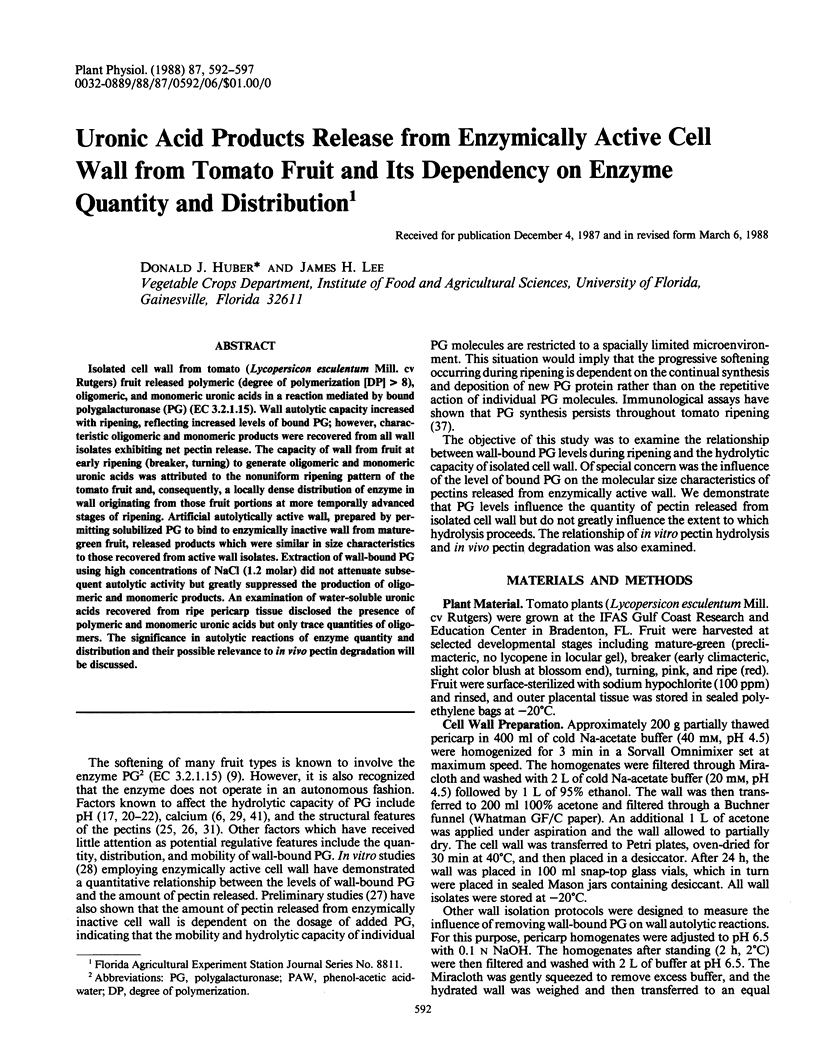
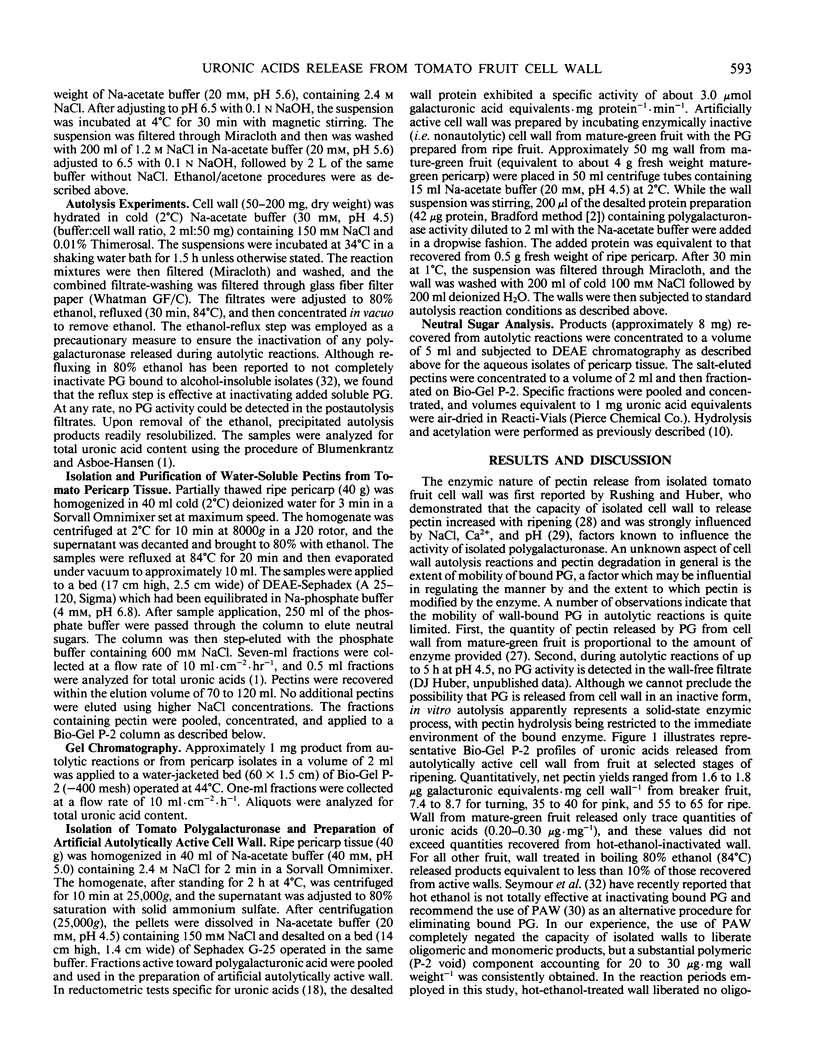
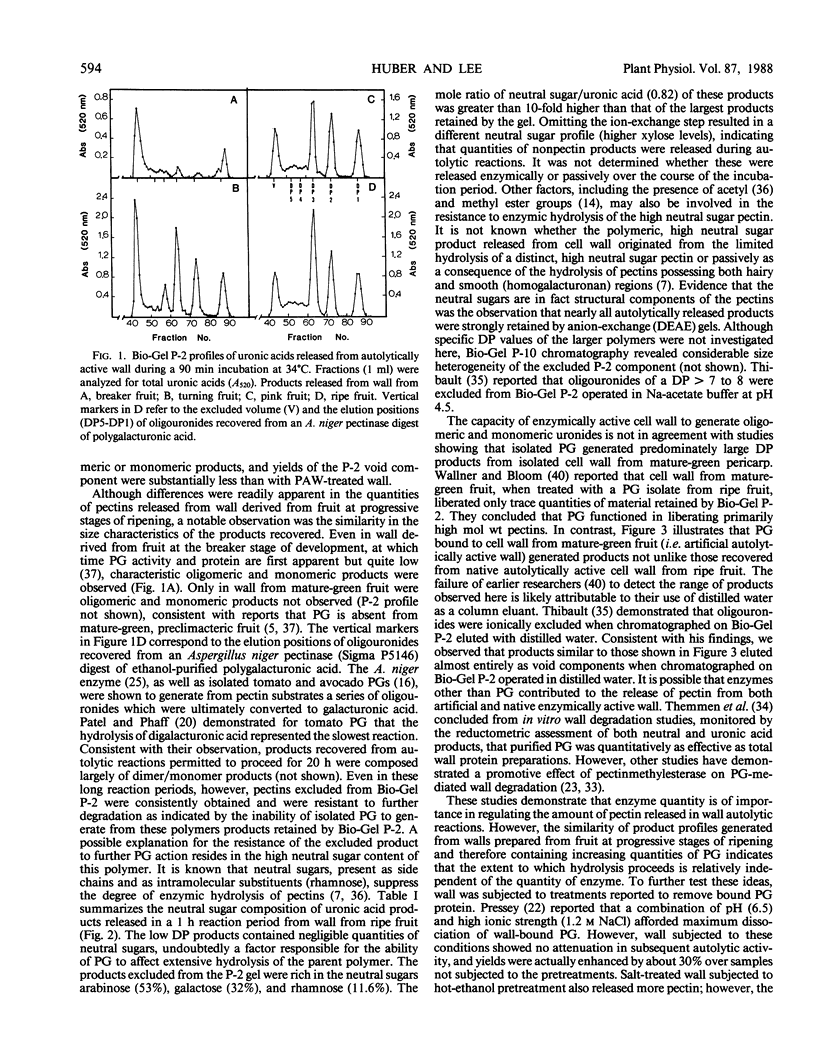
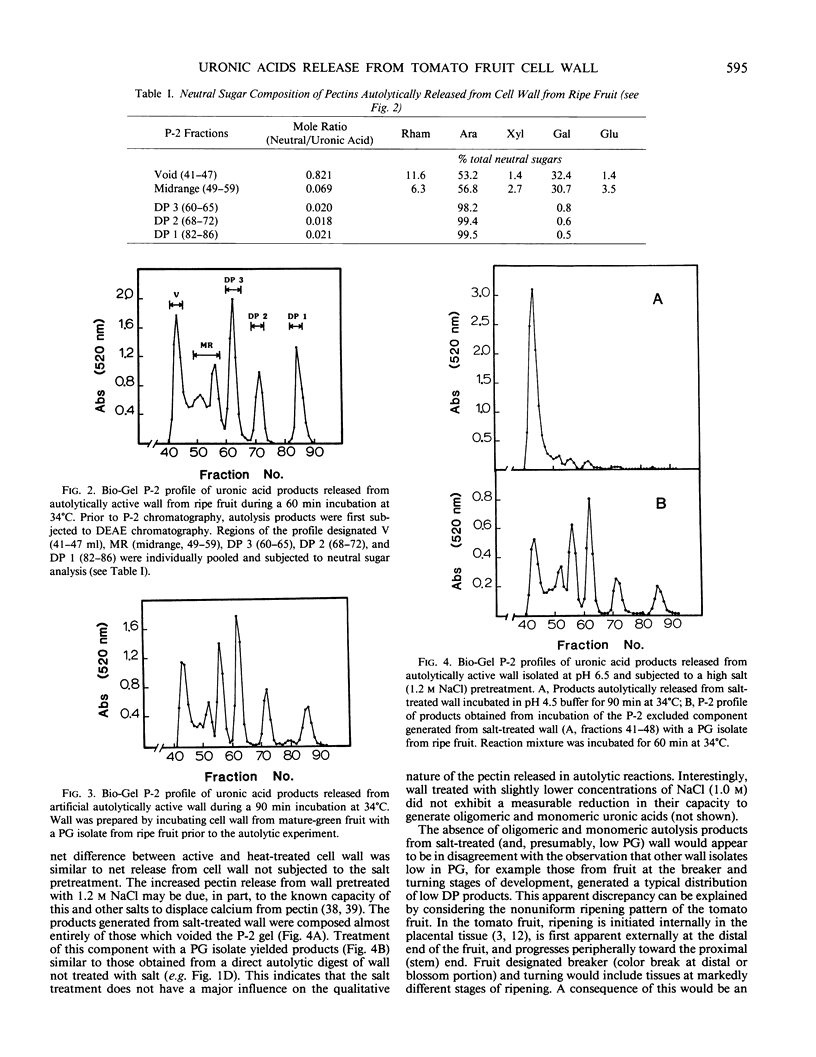
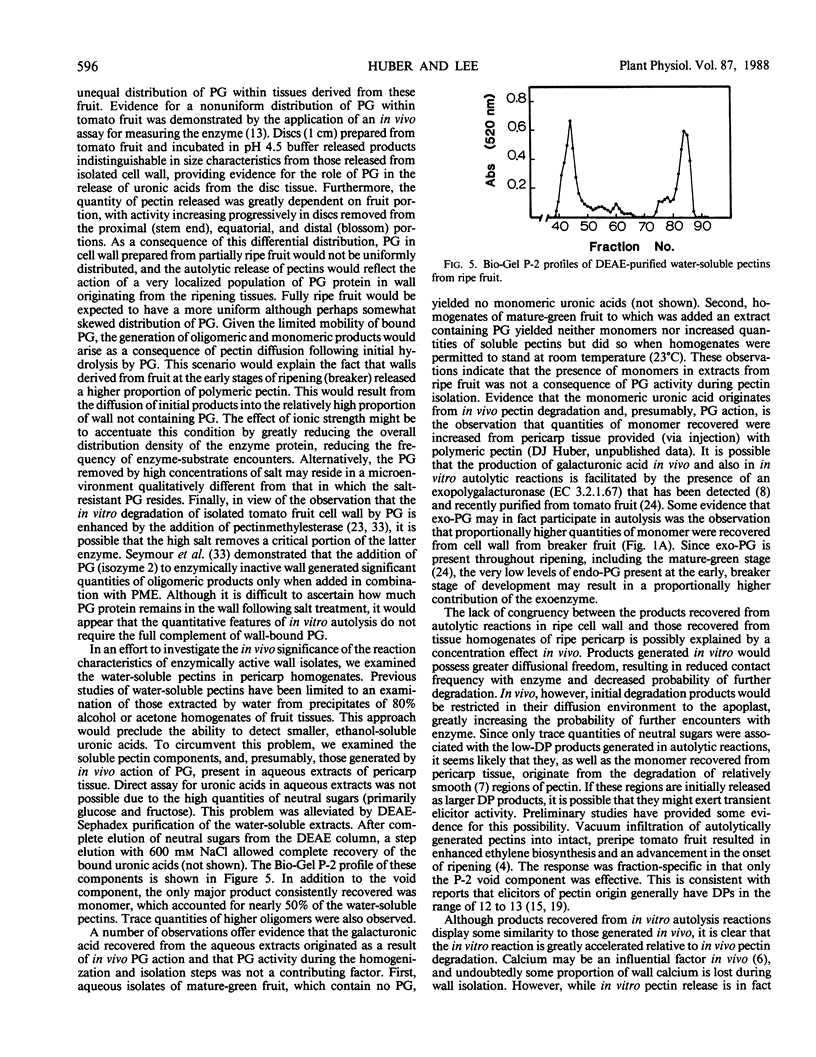
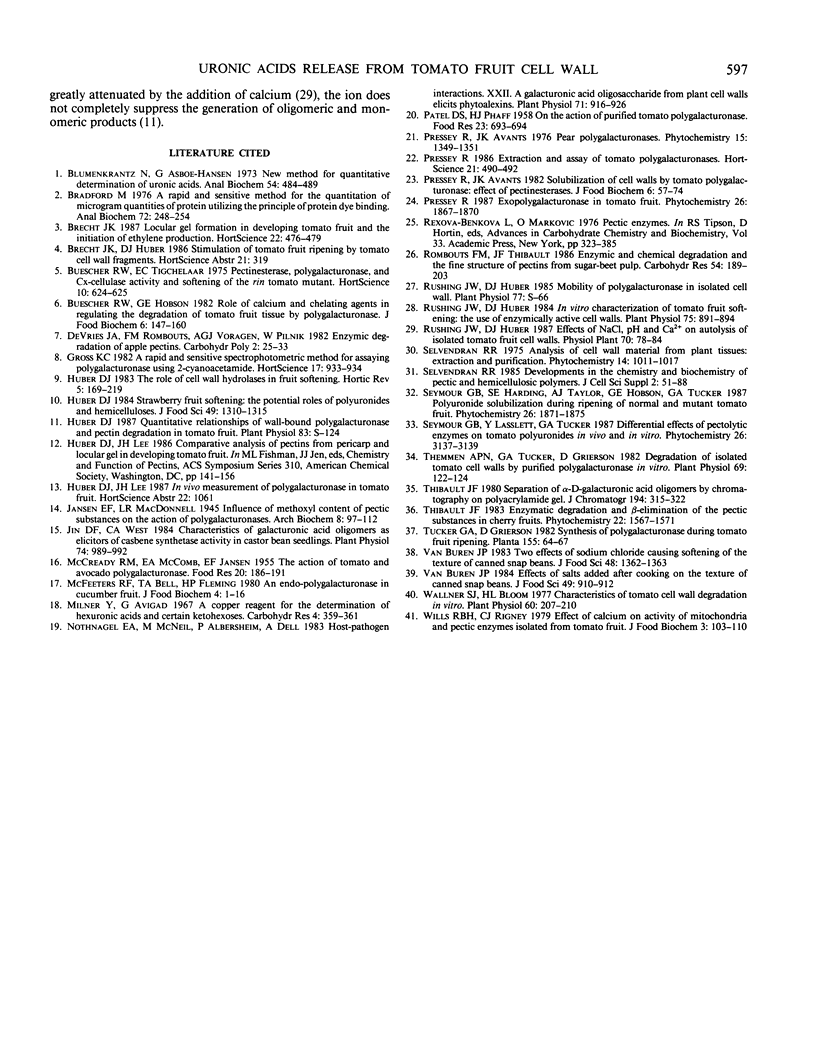
Selected References
These references are in PubMed. This may not be the complete list of references from this article.
- Blumenkrantz N., Asboe-Hansen G. New method for quantitative determination of uronic acids. Anal Biochem. 1973 Aug;54(2):484–489. doi: 10.1016/0003-2697(73)90377-1. [DOI] [PubMed] [Google Scholar]
- Bradford M. M. A rapid and sensitive method for the quantitation of microgram quantities of protein utilizing the principle of protein-dye binding. Anal Biochem. 1976 May 7;72:248–254. doi: 10.1016/0003-2697(76)90527-3. [DOI] [PubMed] [Google Scholar]
- Jin D. F., West C. A. Characteristics of galacturonic Acid oligomers as elicitors of casbene synthetase activity in castor bean seedlings. Plant Physiol. 1984 Apr;74(4):989–992. doi: 10.1104/pp.74.4.989. [DOI] [PMC free article] [PubMed] [Google Scholar]
- Nothnagel E. A., McNeil M., Albersheim P., Dell A. Host-Pathogen Interactions : XXII. A Galacturonic Acid Oligosaccharide from Plant Cell Walls Elicits Phytoalexins. Plant Physiol. 1983 Apr;71(4):916–926. doi: 10.1104/pp.71.4.916. [DOI] [PMC free article] [PubMed] [Google Scholar]
- Rushing J. W., Huber D. J. In vitro characterization of tomato fruit softening : the use of enzymically active cell walls. Plant Physiol. 1984 Aug;75(4):891–894. doi: 10.1104/pp.75.4.891. [DOI] [PMC free article] [PubMed] [Google Scholar]
- Selvendran R. R. Developments in the chemistry and biochemistry of pectic and hemicellulosic polymers. J Cell Sci Suppl. 1985;2:51–88. doi: 10.1242/jcs.1985.supplement_2.4. [DOI] [PubMed] [Google Scholar]
- Themmen A. P., Tucker G. A., Grierson D. Degradation of isolated tomato cell walls by purified polygalacturonase in vitro. Plant Physiol. 1982 Jan;69(1):122–124. doi: 10.1104/pp.69.1.122. [DOI] [PMC free article] [PubMed] [Google Scholar]
- Wallner S. J., Bloom H. L. Characteristics of tomato cell wall degradation in vitro: implications for the study of fruit-softening enzymes. Plant Physiol. 1977 Aug;60(2):207–210. doi: 10.1104/pp.60.2.207. [DOI] [PMC free article] [PubMed] [Google Scholar]


